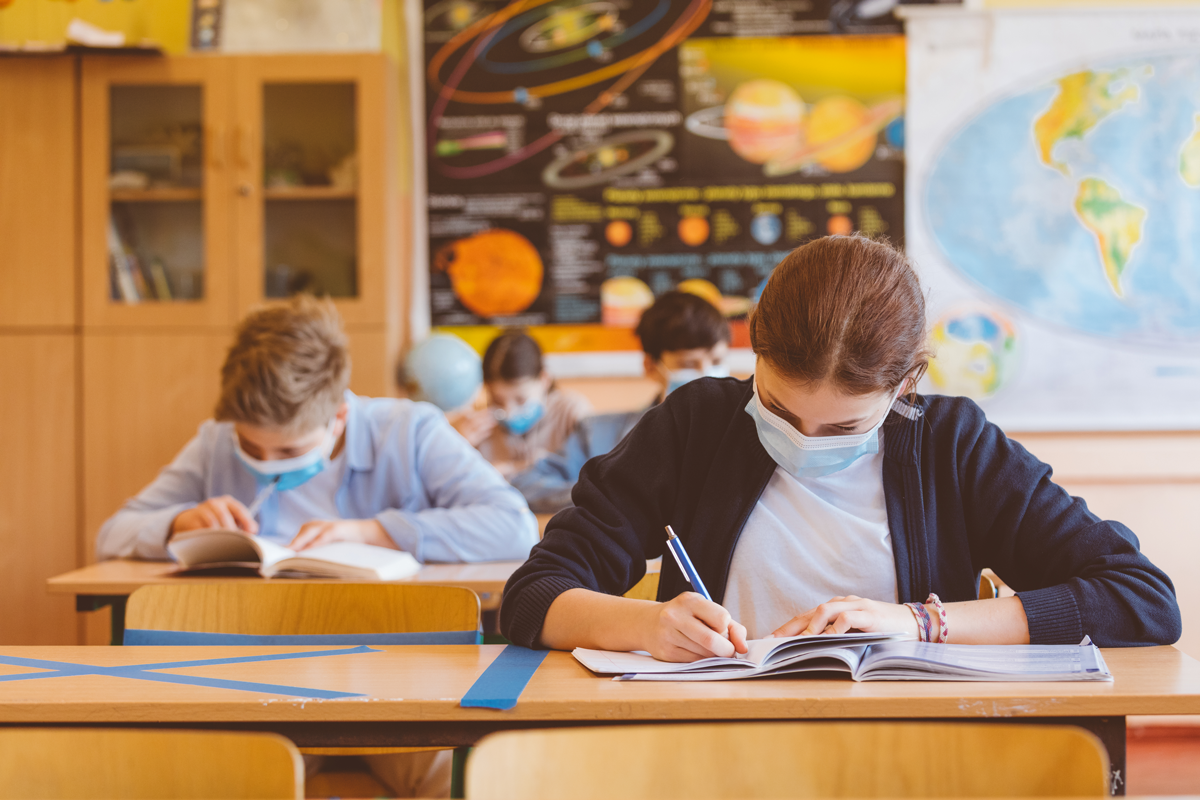“One of the really challenging things to think about is that if we go back to school and suddenly there’s a school with five cases, the assumption is going to be that there was transmission in that school — but that may reflect the community and the fact that we aren’t controlling this in our communities well,” Dr. Wendy Armstrong of the Emory University School of Medicine told viewers of a July 16 webinar hosted by the National Parent Teacher Association.
“Not only do we need a national plan for schools, but we need a national plan for everyone. We, as the grown-ups in the room, also have to actually be doing all of these things,” Armstrong said, noting the necessity that adults take seriously the need to wear face coverings, and employ proper hand hygiene and social distancing. “It can’t be the schools alone — the schools can’t exist as a perfect bubble in a community that is completely uncontrolled. Places of explosive growth are probably not places where we should be opening schools fully.”
Armstrong and Dr. Tina Tan of Lurie Children’s Hospital of Chicago — both of whom serve on the board for the Infectious Diseases Society of America — said that while it is critical that students ultimately return for in-person instruction, doing so cannot come at the risk of their health, or that of their teachers, families and other school staff.
There is general agreement among medical and public health experts that the decision to reopen schools must be based on the latest available scientific data. Recent American Academy of Pediatrics and the Children’s Hospital Association analysis of data on child COVID-19 cases in the United States shows that 200,000 children have tested positive for COVID-19 since the onset of the pandemic.
Nearly 62,000 of those cases reported were reported between June 25 and July 9, representing a 45 percent increase in child cases. “This is something we’re going to have to consider as we talk about reopening schools,” Tan said.
Schools urged to have protocols in place before students return to campus
Among the topics receiving the most attention was personal protective equipment. Tan said that for kids under the age of 7 especially, and other students for whom wearing a mask would be particularly challenging, physically distancing desks will allow them to take off their masks for periods throughout the day. That said, it is still important that even young children wear masks at times when they can’t be socially distant.
When it comes to protecting staff, Armstrong said schools need to consider the types of interaction an adult will have with students and how long interactions last. For cafeteria staff who deal with a lot of children but for a short amount of time with each, for example, having a mask and a Plexiglas sneeze guard between employees and students would be appropriate. A counselor who deals with fewer students but for extended periods, however, would want to employ social distancing in addition to wearing facial coverings.
Both experts agreed that clear face shields could protect teachers who work with younger students, children with disabilities and others who would benefit from being able to see their teacher’s face and mouth.
No matter how cautious schools are, it is highly likely that a student or staff member will eventually test positive, which is why it is critical that districts have protocols in place that dictate a response, Armstrong said. Before schools reopen for in-person instruction, the district should have protocols in place related to screening, messaging to the school community if there is a positive case identified, removal of student or staff that may have been exposed, quarantining and deep cleaning, among other topics.
Both doctors noted that keeping students in smaller cohorts throughout the school day may mean the difference in between having to close down just one classroom or shutting down the whole school.
Transportation emerges as major equity issue
In districts where many students ride the bus to and from school, transportation is guaranteed to be a significant challenge. To best ensure safety of students and the bus driver, Tan said students would need to be physically distanced — meaning fewer students on each bus, sitting a row or two apart — with assigned seating. Students and the bus driver would need to wear masks, and in order to limit exposure for the driver, there should be a Plexiglass barrier.
“That’s going to be really hard for some school districts where you have a lot of kids going to school and their main way of getting to school is the bus,” Tan said.
John B. King Jr., president and CEO of The Education Trust, former U.S. Secretary of Education and moderator of the July 16 discussion, noted that everything previously described “is an expensive set of activities that will require substantial resources from schools.” And the emergency funding thus far provided by Congress falls woefully short of what schools need, he said, especially those already struggling financially.
“This brings up the concern of equity as we think about reopening schools. Schools with fewer resources, schools where people rely more on transportation or schools that are more crowded really are at a disadvantage here,” Armstrong agreed. “There needs to be funding and support for these things to happen … School districts can’t bear the burden of that. There needs to be a national effort.”





